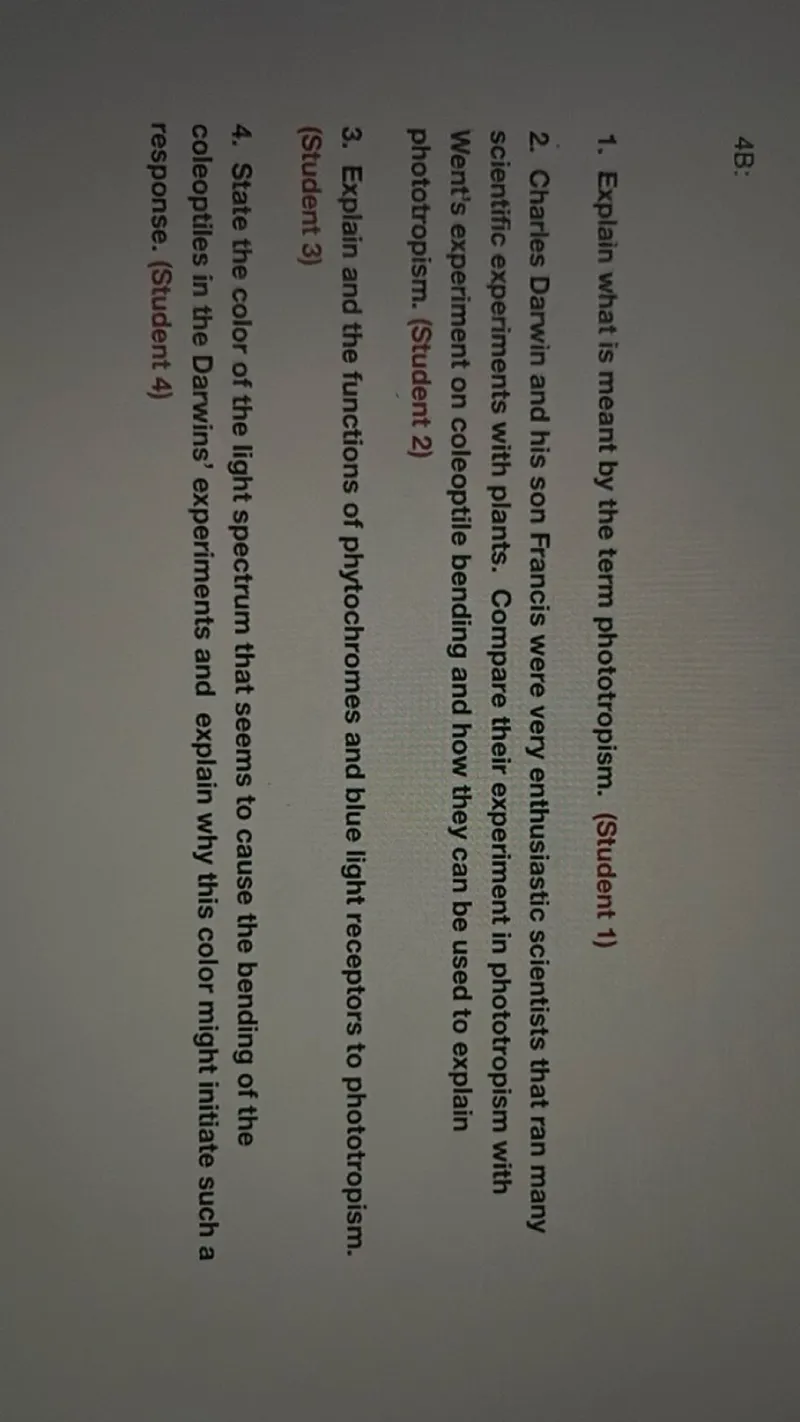Questions: 4B: 1. Explain what is meant by the term phototropism. (Student 1) 2. Charles Darwin and his son Francis were very enthusiastic scientists that ran many scientific experiments with plants. Compare their experiment in phototropism with Went's experiment on coleoptile bending and how they can be used to explain phototropism. (Student 2) 3. Explain and the functions of phytochromes and blue light receptors to phototropism. (Student 3) 4. State the color of the light spectrum that seems to cause the bending of the coleoptiles in the Darwins' experiments and explain why this color might initiate such a response. (Student 4)

Transcript text: 4B:
1. Explain what is meant by the term phototropism. (Student 1)
2. Charles Darwin and his son Francis were very enthusiastic scientists that ran many scientific experiments with plants. Compare their experiment in phototropism with Went's experiment on coleoptile bending and how they can be used to explain phototropism. (Student 2)
3. Explain and the functions of phytochromes and blue light receptors to phototropism. (Student 3)
4. State the color of the light spectrum that seems to cause the bending of the coleoptiles in the Darwins' experiments and explain why this color might initiate such a response. (Student 4)





